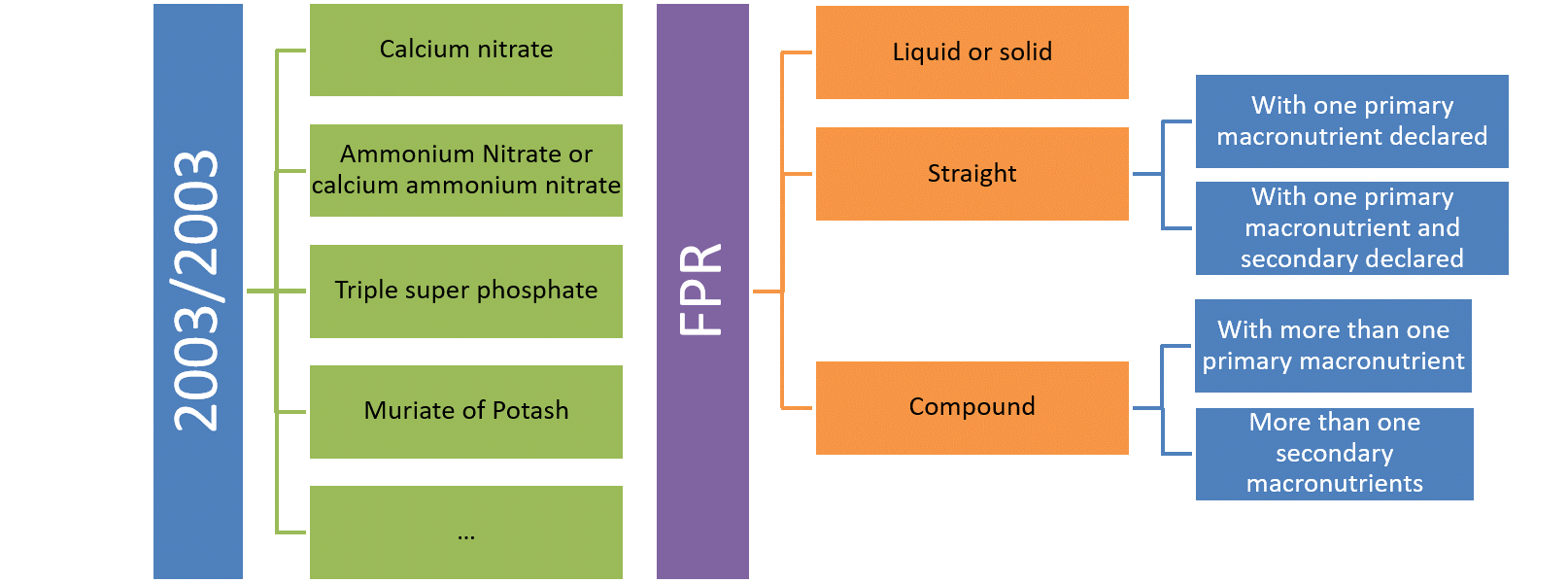Fertilizing Products Regulation
EU Fertilizing Product Regulation
From summer 2022 onwards, fertilizer producers, traders and farmers are confronted with the EU Fertilizing Products Regulation (FPR), which radically changes the way fertilizers are receiving the CE mark and the labelling requirements provided on the products. In the future, it is now possible to market, within the EU, a very wide range of fertilizing products such as organic fertilizers, organo-mineral fertilizers, growing media or biostimulants – provided that they comply with the environmental and safety requirements of the new legislation.
A paradigm shift
Under the new legislation specific procedures will have to be followed depending on what the product is made of and under which category it would be put on the market. The 2003/2003 Regulation was regulating only the characteristics of the final product in a very precise way such as nutrient levels. The FPR will be regulating both the end characteristics (contaminants, nutrient levels – though less stringent than today) as well as the input materials contained in every fertilizing product (e.g. REACH registration).

A new player: Notified Bodies
An additional actor in the new FPR will be the Notified Bodies, which are considered as a conformity assessment body officially designated by the national authority to carry out the procedures for conformity assessment within the meaning of the FPR. These notified bodies are not obliged by any binding timeframe for giving their assessment to the requesting manufacturers. There is actually nothing specified in the FPR. But in practice the market will determine the acceptability of timelines. All the Notified Bodies will be listed in a public database on the internet (called NANDO). The market and local competition are both determining the price range as much as the work performed.
As of 23 June 2021, there have not been official confirmations of any Notified Body, with only Austria and the Netherlands having potential candidates. The main issue is the apparent lack of a long-term business case, with products only needing to be certified once.
A new toolbox available for manufacturers to get a CE mark
The new Regulation establishes a common legal framework for fertilizing products in the form of a toolbox of measures, with different pathways depending on the product category and its content. This is to be understood as a “conformity assessment”, i.e. a process demonstrating whether specified requirements relating to a fertilizing product are fulfilled.
The FPR will exist in parallel to national legislation and mutual recognition as it is only creating an optional harmonization. It will therefore be up to a manufacturer to decide whether it applies for a CE mark to benefit from free circulation in the EU’s internal market. Manufacturers of fertilizers that do not bear the CE marking will still have the open doors to place the fertilizers on their national market.
Standardization and labelling
To implement the FPR for all product categories concerned, about 230 standards need to be created or at least updated. And these standards are a key pillar to ensure a well-functioning EU market for fertilizing products, not least because they are providing a common method for compliance verification during the different conformity assessments. Still, ahead of summer 2022, substantial work within CEN (the European Center of Normalization) will have to be done for establishing the frame of harmonized standards in place for the FPR – and this hopefully before the FPR applies in June/July 2022.
The labelling information placed on the bag if the product is not bulk, will at least double in comparison to the current provisions under the 2003/2003 Regulation. It will have to include instructions for intended use, including application rates, timing and frequency, and target plants or mushrooms; recommended storage conditions; a list of all component materials above 5 % by product weight in descending order of magnitude by dry weight; and any relevant information on measures recommended to manage risks to human, animal or plant health, to safety or to the environment
After long negotiations within CEN, the mandate of the European Commission regarding new standards and harmonized methods has finally been adopted in February 2020. About 20 harmonized methods must be developed or updated for mineral fertilizers only. The intention is to have most of all harmonized methods and standards available as of April 2024.
Team work needed during transition phase
The new procedures for placing mineral fertilizers or other fertilizing products on the market – as created by the FPR – should ensure confidence of consumers and public authorities regarding the conformity of the products. This new framework will also support the current innovative pathway that the mineral fertilizer industry has already undertaken, being in the context of circular economy, biodegradability of polymer coatings for Controlled Release Fertilizers, or combining mineral fertilizers with biostimulants. Fertilizer producers should remain at the fore-front of the discussion, especially to be fit to meet the expectations of farmers.
